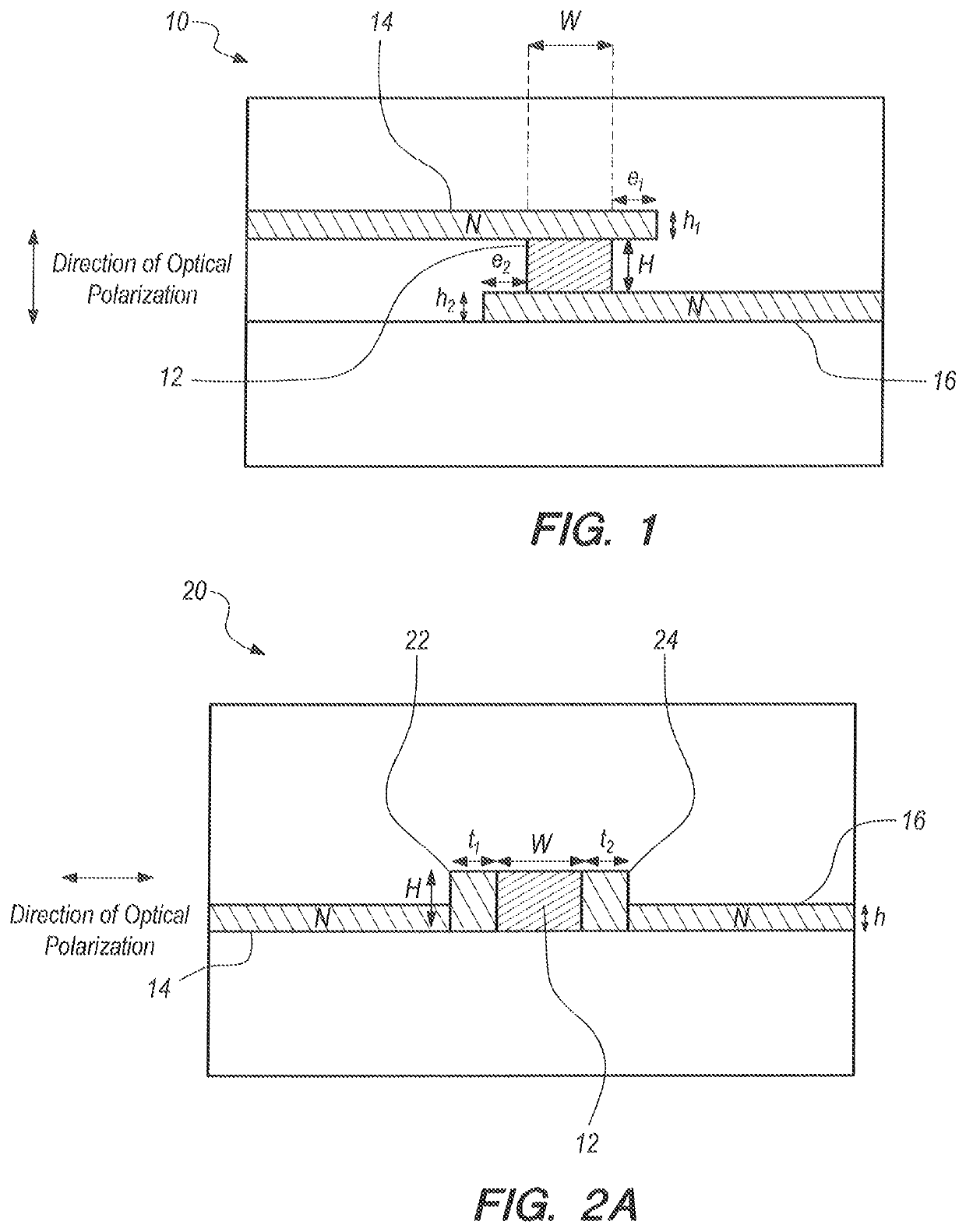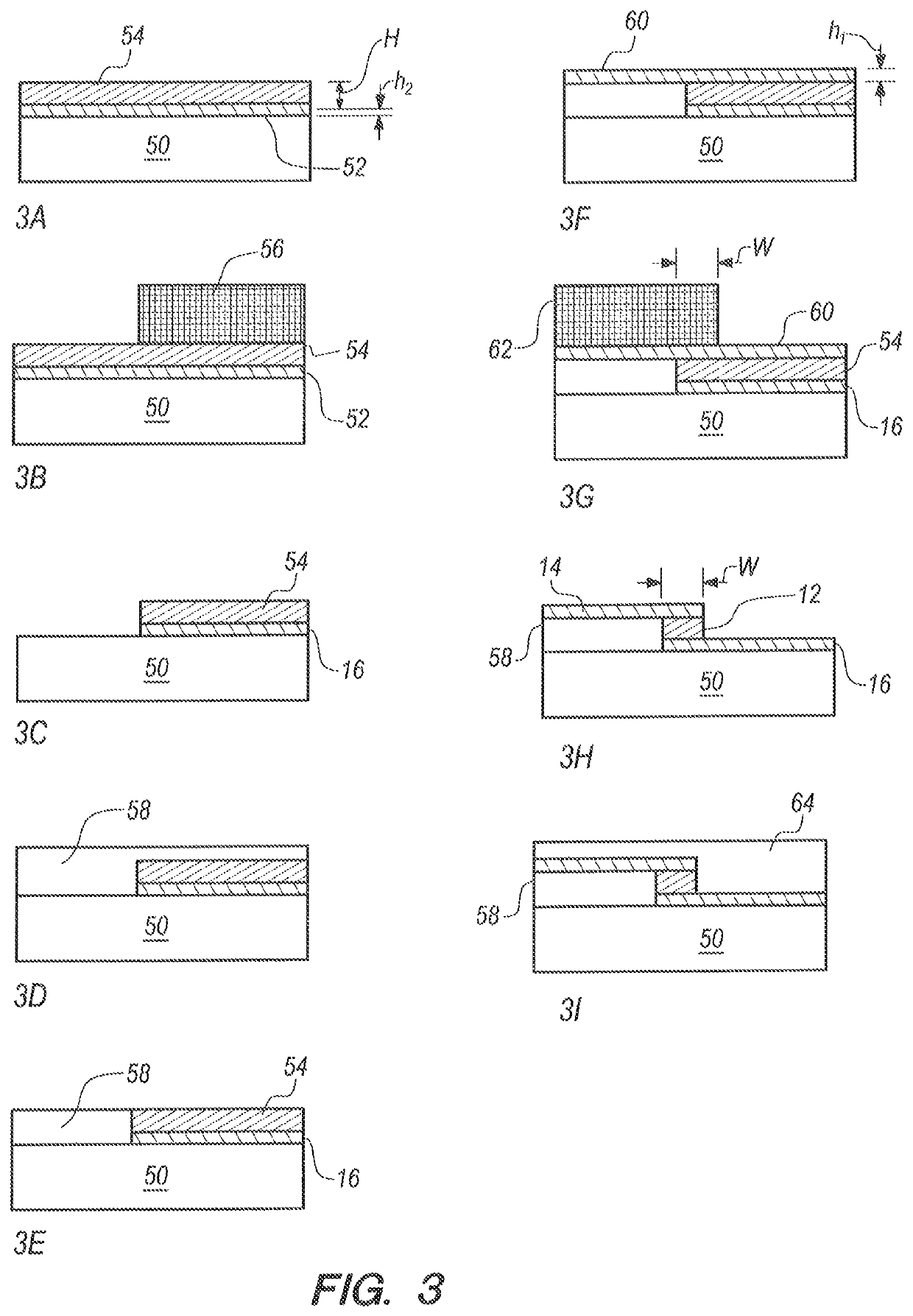Dielectric electro-optic phase shifter
a dielectric electrooptic and phase shifter technology, applied in non-linear optics, instruments, optics, etc., can solve the problems of limited bandwidth, high optical loss, high power consumption, etc., and achieve low vl, low power consumption, and high operation bandwidth
- Summary
- Abstract
- Description
- Claims
- Application Information
AI Technical Summary
Benefits of technology
Problems solved by technology
Method used
Image
Examples
Embodiment Construction
lass="d_n">[0027]Referring initially to FIG. 1, a vertical electro-optic (EO) phase shifter in accordance with the present invention is shown and is generally designated 10. As shown the vertical EO phase shifter 10 includes a waveguide core 12 which is directly connected in intimate contact with a first electrode 14 and a second electrode 16. For the present invention, the waveguide core 12 is made of a Silicon-Rich Silicon Nitride (SRN), while both the first electrode 14 and the second electrode 16 are made of a doped silicon. For purposes of the present invention the first electrode 14 and the second electrode 16 can be either P doped or N doped silicon.
[0028]In detail, the waveguide core 12 is manufactured in a multi-step process involving a silicon-rich silicon nitride (SixNy) film that is deposited by well known Chemical Vapor Deposition (CVD) techniques. These techniques allow for the deposition of a non-stoichiometric silicon nitride film which is silicon rich. In this manne...
PUM
| Property | Measurement | Unit |
|---|---|---|
| phase shifting length | aaaaa | aaaaa |
| phase shifting length | aaaaa | aaaaa |
| relative permittivity εr | aaaaa | aaaaa |
Abstract
Description
Claims
Application Information
 Login to View More
Login to View More - R&D
- Intellectual Property
- Life Sciences
- Materials
- Tech Scout
- Unparalleled Data Quality
- Higher Quality Content
- 60% Fewer Hallucinations
Browse by: Latest US Patents, China's latest patents, Technical Efficacy Thesaurus, Application Domain, Technology Topic, Popular Technical Reports.
© 2025 PatSnap. All rights reserved.Legal|Privacy policy|Modern Slavery Act Transparency Statement|Sitemap|About US| Contact US: help@patsnap.com



